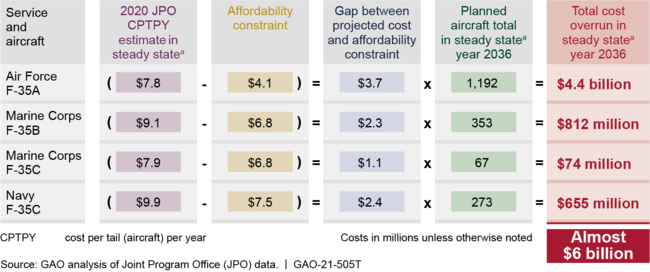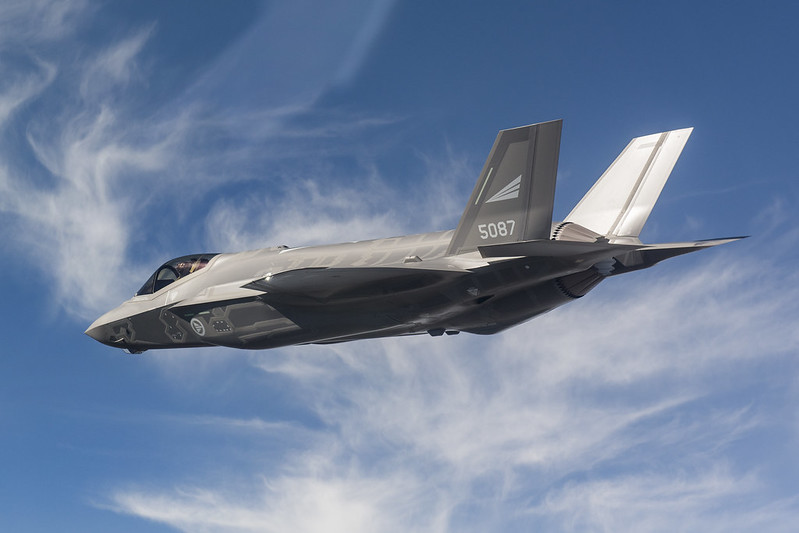The only problem I have is if the aircraft is worth the investment all the way to 2070?
In the Kosovo war aircrafts had anti-radiation missiles that were like 5 times the range of the interceptor missiles used by S-75s and S-125s but yet aircrafts were still shot down and even a stealth one. On paper, based on air to ground weapon ranges there should have been no casualties, but there were. Those interceptor missiles did not even have the range capabilities of the S-200 and only relied on command guidance instead of semi-active homing capabilities done by the S-200 for better accuracy towards aerial targets. Not saying that they should have gotten S-300s from Russia but S-200s could have gave a better assessment with a very good likelihood on raising casualties or receiving more pilots to be POWs.
Firstly, the F-117 which was used in Kosovo war didn't have a RWR, it didn't have a missile warning receiver or a radar either. It also couldn't carry anti radar missile. So there is no way for it to either detect enemy radar, or alert pilot of a missile launch.
Secondly, F-35 will not remain at exact current condition until 2070, just like you think Su-57 will have a lot of upgrade, what make you think an F-35 at 2021 and 2070 are the same?
Having active radar homing capabilities for interceptor missiles. The ARGSN used on the 9M317MA missile by Buk-M3 can autonomously track a 0.3m2 target from 35 kilometers away. 9M96MD and 40N6 are not only new missiles with active homing capabilities like the Buk-M3 missile but bigger in size hence even more powerful tracking capabilities than Buk-M3 missiles. Missiles will be either pointing on the bottom side of aircrafts when rising or pointing down on the topside of aircrafts and those always have the highest RCS reflections because of surface area. Air defenses before used either command guidance or semi-active homing.
Firstly, I think you should take that number with a grain of salt , I didn't look at it very carefully earlier but now that I decided to google search it, apparently that detection range value isn't mentioned anywhere except: topwar.ru site and some forum where you reposted it. Even on the brochure from manufacturer that value isn't mentioned, so it actually a big red flag regarding where topwar.ru took their number from?. Did they simply made that up?
Secondly, the advertised detection range of seeker is always much longer than actual detection range due to the fact that on the battlefield, these aircraft will have support jamming, and a long missile seeker range will actually benefit a stealth aircraft much more than it can benefit conventional fighter. Think about it, both side launch missile, the missile from stealth aircraft can lock on the conventional fighter from 35 km, whereas the same missile only lock on the stealth aircraft from 4.7 km. So who will have more time to perform evade maneuver?
Thirdly, in theory when your missile look at target from higher altitude, you can see the higher reflection due to greater surface area. However, pointing at the aircraft from the top also mean your seeker will be affected by ground clutter, which mean it is much harder to track the target. Missile only point at the bottom of aircraft when the range is very short, because low altitude air is thicker and cause more drag, so BVR missile shoot tend to follow a ballistic arc
BTW, there are several air defenser which use active radar seeker before Buk-M3 such as SL-AMRAAM, SPYDER, STUNNER, PAC-3
Modernization upgrades. Problem with aircrafts is when they get new avionics or still have block upgrades to finish it takes a long time to upgrade. Also using the F-22 or F-35 as an example, current designs will more than likely always stay the same like we cant expect an F-35 to get smaller, maybe new RAM applications to aircrafts, etc. S-400 went from 2007 radars to 2015 Nebo-M radars and is already going to get a new radar system that will exceed the performance of the Nebo-M called Nioby. F-35s will stay more likely the same until 2070 while the airforce will be focusing on aircraft development and production for NGADs. Newer long range ground to air missiles as well.
Firstly, F-35 will not keep the same avionic between now and 2070, it also get constantly upgraded
It will get improved sensor like advanced EOTS, advanced DAS as well as new weapons like Siaw, Lrew, Hawc, thor-er, Hyfly2 as time go by. There is even structure modification as the weapon bay modification for heavy aft weapon




Secondly, the purpose of stealth is not to be completely invisible. The purpose of stealth is to reduce enemy detection range to the point that you can detect and attack them, before they can detect and attack you. For example: let say with the current RCS then detection range of enemy against F-35 is 50 km, while the detection and engagement range of F-35 against enemy is 100 km. But 5 years later, the enemy made a new radar which can detect F-35 from 120 km. Does that mean stealth lose all the value at that point? No, as long as the sensor and weapons for F-35 also improve, maybe enemy with improved radar can detect F-35 from 120 km, but if F-35 with its own improved sensor can detect and attack that enemy from 250 km then it still have the advantage. And as I emphasized many times, stealth synergy very well with jamming
Electronic Warfare Systems. Despite having longer range weapons and knowing where the location of the SAMs were a lot of air to ground missiles were fired and most missed or took awhile to take out Serbian SAMs. Murmansk-BN was reported to jam a enemy radio station from 7,000kms away which means radio HF frequencies can be jammed on aircrafts, Krasukhas can jam LEO satellites and aircraft radars with a newer EW system to replace it sooner. Tirada-2 jams satellites 300mhz to 3ghz, Tirada-2S jams satellites at 3–30ghz, Bylina-MM jams satellites at 30–300ghz. Borisoglebsk-2 jams datalink communications from aircrafts to their weapons.
Firstly, the biggest issue in Serbia war was that they didn't know where these SAM are, because these SAM didn't emit or try to protect the country infrastructure and the SAR technique of that time wasn;t advanced enough to give adequate resolution
Secondly, regarding these jamming system:
Murmansk-BN can jam radio system from 7000 km ( outside the radio horizon limit) that mean it must used the ionosphere and jam the HF frequency. But F-35 don't even have HF communication antenna
Krasukhas can jam aircraft radar, however, to jam a radar, it must emit. The problem is that a ground emitter can be geolocated much quicker and much more accurate than an airborne emitter since they either doesn't move or move very slowly which mean geolocation technique like kinematic ranging and single ship geolocation work very well against ground emitter. Unlike airborne emitter, they can't move away quickly to avoid retaliation strike after they are located.
For the rest like Tirada-2, Tirada-2S, Bylina-MM, Borisoglebsk-2 aka GPS , satellite communication jammer. The solution would be using anti jam GPS with a Multiple Element Canceller or Controlled Radiation Pattern Antennas
photonic radars. Russian companies KRET, RTI, VEGA and the general designer of Russia's RWR gave ranges of 100ghz to terahertz ranges for the use of photonic radars. Yakhroma radar works in 4 bands including the 30–300ghz range meant to be autonomous with no human interaction. Stealth aircrafts are more than likely not prepared to deal with such frequencies in which the emergence of this technology might mean they have solved the atmosphere attenuation problem.
atmospheric attenuation of radio wave is a physical phenomenon, you can't "solve" it just like how you can't "solve" the speed of light limit.
Stealth aircraft will deal very well with high frequency, especially the 100-300 GHz range, since all the reflection will be specular reflection, which is exactly what stealth shaped are designed to deflect. There will be very little if any surface wave return which is much harder to attenuate and deflect.
There is also EW immunity because of the broad dynamic range of the radar
As I mentioned earlier, a wide dynamic range doesn't make you immune to EW, it only make you immune to the method which use noise to drown your receivers also known as noise jamming. But there are many others form of jamming like RGPO, RGPI, VGPO, VGPI, Cross eye, Cross polarization ..etc












